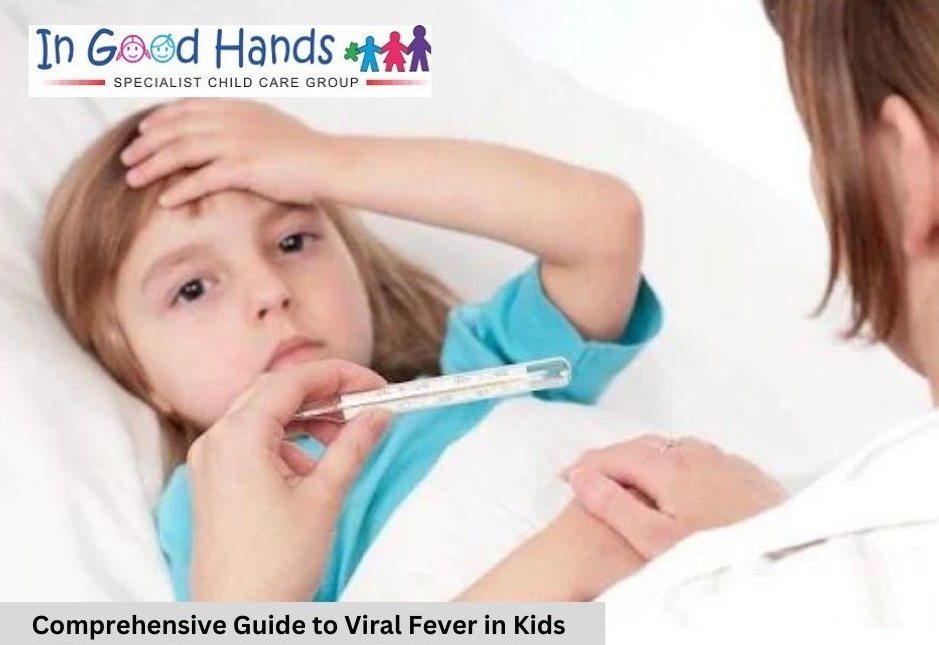Comprehensive Guide to Viral Fever in Kids
Comprehensive Guide to Viral Fever in Kids: Symptoms, Precautions, and Causes by Dr. Vivek Goswami in Noida
Viral fever is a common condition in children, especially during the monsoon and winter seasons. Dr. Vivek Goswami, a renowned pediatrician in Noida, emphasizes the importance of understanding viral fever to manage it effectively. Viral fever typically presents with a sudden high fever, often exceeding 100.4°F (38°C), and may come and go, lasting for several days. Children often experience chills and shivering as their body responds to the elevated temperature. Persistent headaches and general body aches are also common, making children feel weak and fatigued. Other frequent symptoms include a sore throat, often accompanied by a dry cough, nasal congestion, a runny nose, gastrointestinal symptoms like nausea, vomiting, diarrhea, or stomach pain, and in some cases, a skin rash that varies in appearance and location. Swollen lymph nodes, particularly in the neck, are another sign of the body’s immune response to the infection.
The causes of viral fever in children are diverse. Rhinoviruses, responsible for the common cold, lead to symptoms like a runny nose, sore throat, and fever. Influenza viruses cause the flu, characterized by high fever, chills, body aches, and respiratory symptoms. Respiratory syncytial virus (RSV) is another common cause, especially in infants and young children, often leading to bronchiolitis and pneumonia. Adenoviruses can cause a range of illnesses, including respiratory infections, conjunctivitis, and gastroenteritis, all presenting with fever. Enteroviruses, including Coxsackievirus, can cause hand, foot, and mouth disease, as well as other febrile illnesses with rashes. Parainfluenza viruses are a common cause of croup and other respiratory infections. In regions where dengue and other arboviruses are prevalent, they can cause high fever, severe body aches, and other systemic symptoms.


Preventing viral fever involves several key precautions. Good hygiene practices are essential, including regular handwashing with soap and water, especially before eating and after using the restroom. Children should be taught to avoid close contact with individuals who are sick and to use alcohol-based hand sanitizers when handwashing is not possible. Proper nutrition, hydration, and up-to-date vaccinations, including the annual flu vaccine, play a crucial role in strengthening the immune system. Children should be discouraged from sharing personal items like utensils, water bottles, and towels to prevent the spread of infections. Good respiratory etiquette, such as covering the mouth and nose with a tissue or elbow when coughing or sneezing, is also important. Regular cleaning and disinfecting of frequently touched surfaces and objects, such as toys, doorknobs, and light switches, help reduce the risk of infection. Promoting a healthy lifestyle with regular physical activity and adequate sleep boosts the immune system and helps prevent illness.
Managing viral fever in children involves several steps to ensure a smooth recovery. Rest is crucial to help the body fight off the infection, and keeping the child well-hydrated with plenty of fluids, including water, oral rehydration solutions, and clear soups, is essential. Fever-reducing medications like acetaminophen or ibuprofen can be used as recommended by a healthcare provider. Comfort measures, such as a lukewarm bath or cool compresses, can help reduce fever and make the child more comfortable. It is important to monitor the child’s symptoms closely and seek medical attention if there are any signs of complications, such as difficulty breathing, persistent vomiting, or seizures. Following the pediatrician’s recommendations for managing the child’s illness, including any prescribed medications or treatments, is essential for a full recovery.
Viral Fever in Kids by Dr. Vivek Goswami in Noida
Viral fever is a common condition in children characterized by a sudden high fever, often exceeding 100.4°F (38°C), caused by various viral infections.
Symptoms include high fever, chills, shivering, persistent headaches, body aches, muscle pain, fatigue, sore throat, runny or stuffy nose, gastrointestinal issues (nausea, vomiting, diarrhea, stomach pain), skin rash, and swollen lymph nodes.
Common causes include rhinoviruses (common cold), influenza viruses (flu), respiratory syncytial virus (RSV), adenoviruses, enteroviruses (including Coxsackievirus), parainfluenza viruses, and arboviruses like dengue.
Prevention measures include regular handwashing, avoiding close contact with sick individuals, using hand sanitizers, proper nutrition, staying hydrated, keeping vaccinations up-to-date, not sharing personal items, practicing good respiratory etiquette, and regular cleaning and disinfecting of surfaces.
Ensure the child gets plenty of rest, stays well-hydrated, and use fever-reducing medications like acetaminophen or ibuprofen as recommended. Provide comfort measures like a lukewarm bath or cool compresses and monitor the child’s symptoms closely. Seek medical attention if there are signs of complications.
Seek medical attention if your child has difficulty breathing, persistent vomiting, seizures, or if the fever lasts more than a few days without improvement.

